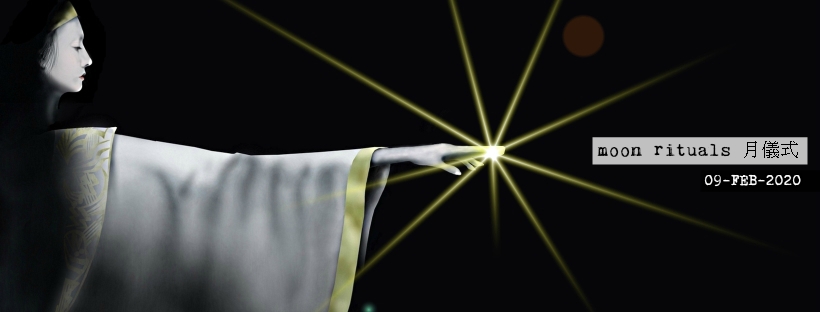By Keith Walsh
As a romantic, I’ve always enjoyed poetry and music that honors elements of nature in a mythic way. So it was with great anticipation and happiness that I enjoyed “Moon Rituals” by Sienná, the new release by this Japanese artist who makes Norway her home.
I should restate this. The world is Sienná’s home, and though her reflective ambient music is quite cerebral, the themes and sonic palettes represent the fusion of imagination with the world and the things in it: nature, history, technology and romance.
In the past couple years since her last album, ‘Q.o.S,” Sienná’s been collecting ideas and sounds that stoke the fires of her imagination. “I´m traveling around with my Macbook Pro,” she writes me, “so I can work on programming and mixing wherever I am. But I don´t record anything when I´m out of studio. Although yes, I recorded street-sounds on my phone. The bell you can listen on “Moonrise 月の出” for instance, was recorded on the day of the Palio in Siena (Italy). It´s called The Sunto bell which rings the whole day of the event, coming to a stop only when the Palio race begins.”
“Moonrise,” the tune that opens the new album, is pensive before it turns to a whimsical pastoral theme. The rest of the album features lovely melodic structures, with classically styled piano melodies all created with Logic Pro X and soft synths. The result is Sienná’s most tranquil album yet. There are still signs of her earlier experimental offerings and lots of her Asian style drum beats, though “Moon Rituals” represents the more ambient side of Sienná, as one might expect with a theme inspired by the mystery and majesty of the night time sky and its guiding light. The way that prepared piano and drums merge together to create a percussive and melodic effect just as an auspicious string section starts to build on “Crescent Moon,” –one of the best ambient tunes I’ve ever heard by any artist — is breathtaking.
“Moon Rituals” is Sienná’s most ethereal album yet. The minimalistic tone of the album arises from her approach in the studio. Sienná explains: “I´m a wanna-be-minimalist, not only in music but in everything. Adding things is easy but it distracts and makes it unnecessarily complicated. I think it´s better to reduce to a minimum and promote what I believe is most valuable. I´m very inspired by the ‘wabi-sabi’ aesthetic that lets the most significant element stand out in simplicity in an effective way. I still have a long way to go, but I´ll keep working on it.”
It’s interesting that the album comes together as a whole unit of meaning, with a theme that ties it neatly together. One might expect that the theme came first, but actually the theme is more representative of the way Sienná works at this point in her career. “It was not my conscious choice to make an album like this one in the first place,” she explains. “But I kept writing music, and one day I suddenly noticed that I had so many unreleased down-tempo songs in my folder. So I thought why not, instead of releasing another version of ‘QoS’. It was the first time I tried to program, mix and master so many orchestral tracks. The sounds came from EXS24 plug-in (unfortunately not from a real orchestra, because I´m not rich enough!), but still provided sampled real sounds from the orchestral instruments with flip or breath noises. I had a lot of fun with frequencies to cut and boost.”
My experience with poetry about the moon is mostly from the English romantics. For Sienná, there’s an ancient history that resounds throughout the album. “Maybe it´s something to do with my Japanese cultural background,” she tells me. “The moon is a symbol for enlightenment in Buddhism, and also an integrated part of our traditions and seasonal celebrations to appreciate beauty and harvest. We still do celebrate Wesak and the harvest moon. We do have hundreds of waka- and haiku-poems about the moon as well as many moon names depending on their phases and conditions.”
https://www.instagram.com/sienna_web/
finis
